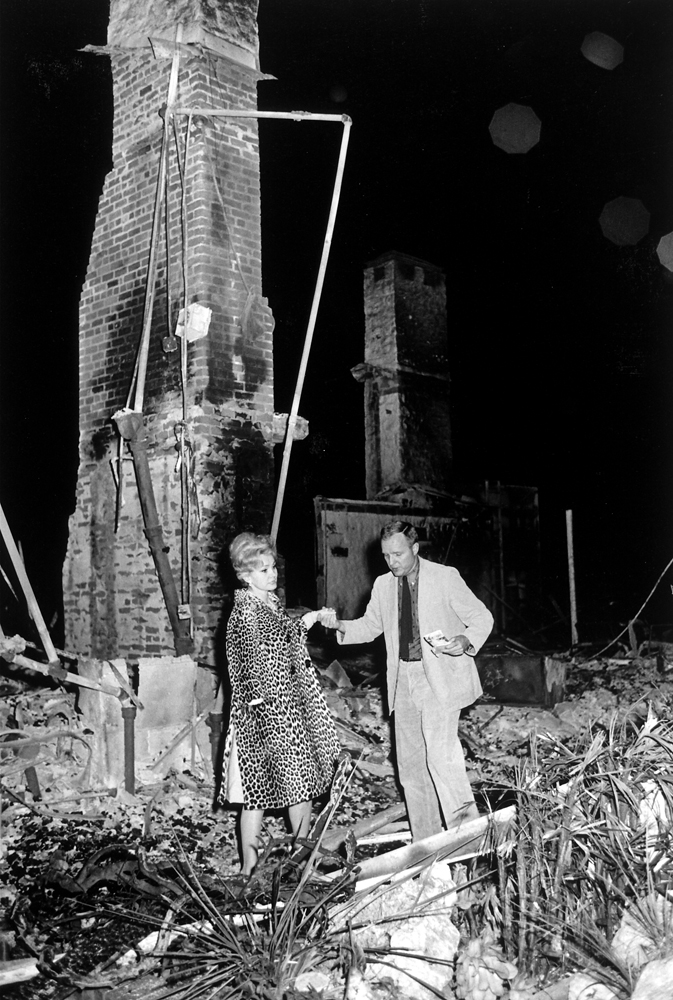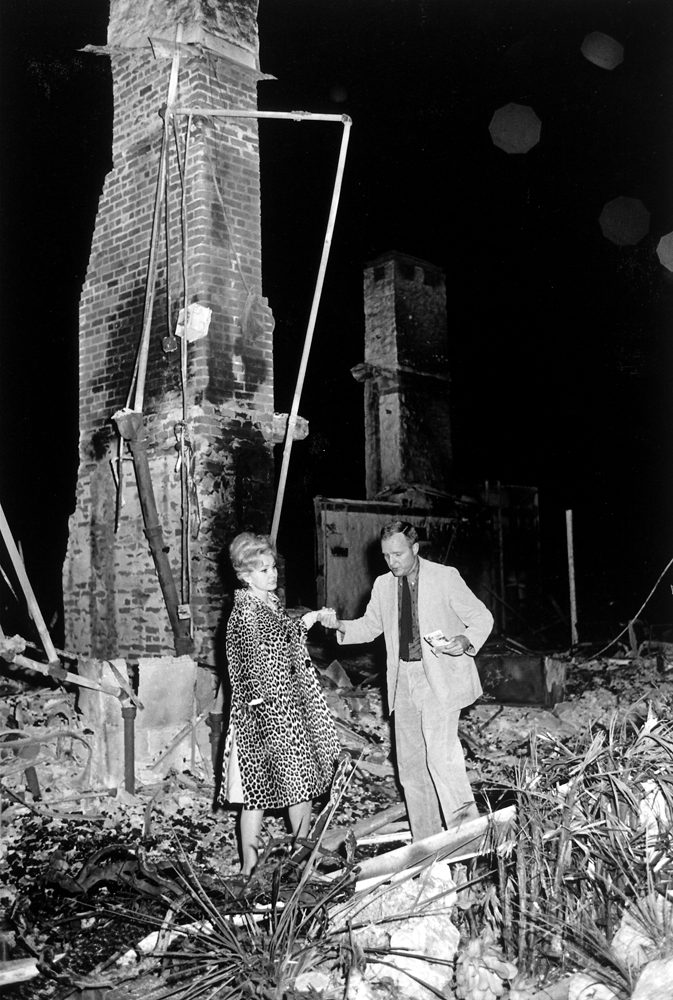
In November 1961, scorching Santa Ana winds fueled a fire that claimed nearly 500 homes in one of California’s wealthiest communities. LIFE magazine covered the “Bel Air Fire” and reported on residents of the neighborhood — Maureen 0’Hara, Fred MacMurray, Richard Nixon, Zsa Zsa Gabor (seen here with legendary LIFE editor, Dick Stolley) — dealing with the threat from, and the aftermath of, the flames. The article, “A Tragedy Trimmed in Mink,” describes the destruction of the ritzy neighborhood: “It was probably the poshest exodus since the fall of the czars sent the Russian nobles fleeing.”
Well before Bel Air housed the rich and famous, however, it was a chaparral-filled foothill and canyon along the Santa Monica Mountains. The smoky air and frequent fires in the Los Angeles basin reportedly astounded Spanish settlers. But fire is hardly an unmitigated disaster for environments in the American West, and environmental scientists understand the importance of wildfires, seeing them as natural and as necessary as rain.
Humans, of course, often choose to live in fire-prone landscapes. Countless post-WWII suburbs were developed on land once considered impossibly remote and isolated. Rather than distancing themselves from nature, suburbanites sought to live within it — but in a muted way.
Fire will always be a part of the natural order — something to keep in mind if we insist on living among the flames.
Jameson Karns, a former firefighter, is a doctoral student at UC Berkeley’s History of Science Department, where he studies Fire Science.

More Must-Reads from TIME
- Donald Trump Is TIME's 2024 Person of the Year
- TIME’s Top 10 Photos of 2024
- Why Gen Z Is Drinking Less
- The Best Movies About Cooking
- Why Is Anxiety Worse at Night?
- A Head-to-Toe Guide to Treating Dry Skin
- Why Street Cats Are Taking Over Urban Neighborhoods
- Column: Jimmy Carter’s Global Legacy Was Moral Clarity
Contact us at letters@time.com